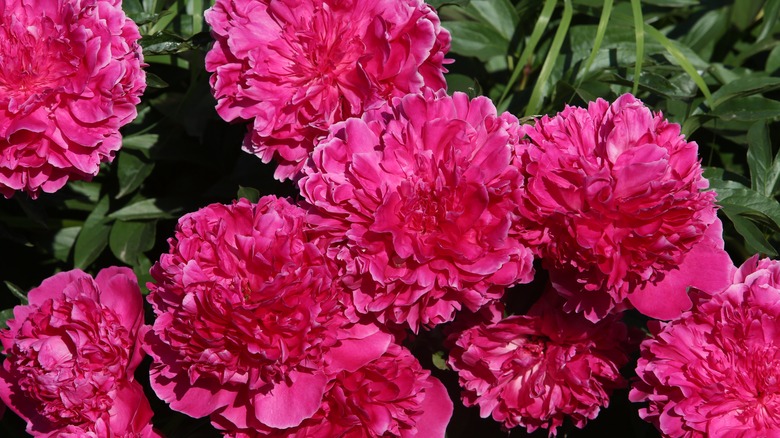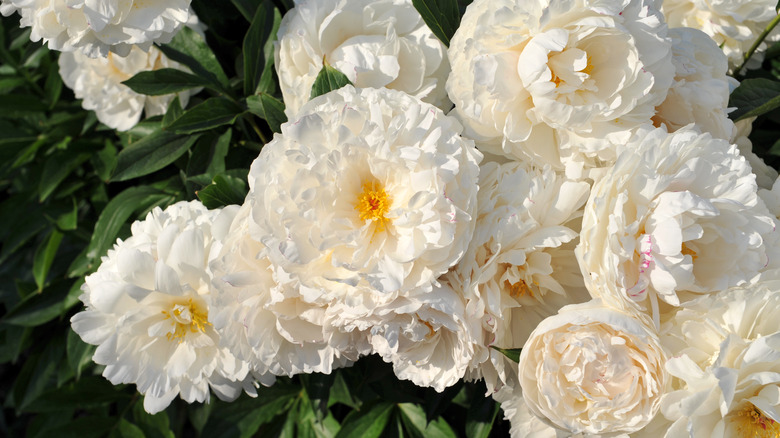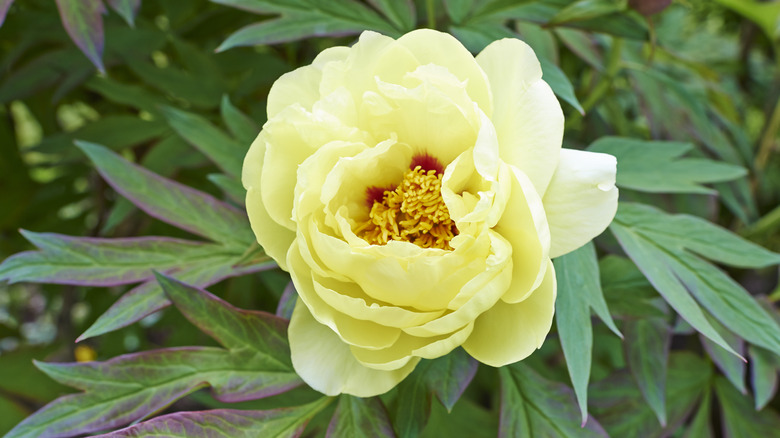The Best Spot In Your Garden To Plant Peonies
One of gardeners' and flower lovers' favorite blooms, peonies are a stunning addition to any yard or flower box. Peonies symbolize good luck, as well as wealth and fortune, in China and Japan. With a stunning full blossom of petals and a beautiful fragrance, peonies have because a go-to for floral arrangements and bouquets. And what makes them a great flower to grow in your front or back garden is that they will thrive easily given the right conditions.
These flowers are pretty easy-going relative to other, more delicate blooms. Peonies are hardy, allowing them to grow in almost any USDA Zone, even as cold as Zone 3, which encompasses the most northern tips of states in the US, including some southern regions of Alaska. And with the proper initial care, peonies can continue to bloom for over 100 years and even thrive with little maintenance.
Because of the little fuss associated with growing them, peonies are a great option for beginner gardeners or anyone who wants to fill their yard with impressive flowers without undertaking extensive maintenance. Taking the time to choose the right spot and do the initial work practically ensures you'll have gorgeous flowers every year for seasons to come.
The right location the first time
As hardy as peonies are, they prefer to be left alone after their initial planting; these flowers don't transplant as well as other species. This makes choosing the right location the first time all the more important. When choosing a spot for your peonies, keep in mind the place for their best growing conditions first and then aesthetically where you want them.
Peonies prefer getting full sun throughout the day, so look for a spot that receives about six to eight hours of sunlight during the day. These flowers will still be able to grow when receiving half a day of sunlight or in slightly shady spots, but you may not get as many or as lush of blooms. For a thriving plant, choose full sun.
It's also best to plant peonies in areas where they're on their own. Keep peonies separate from other flowering bushes, shrubs, and trees to prevent competition over resources like food, water, and light. You may also want to choose a spot that protects the flowers from harsh winds. A fence or exterior wall can break a breeze and prevent a direct hit to the blooms. Soil should be fertile and moist but well-draining so as not to keep the roots soggy. A neutral pH ensures the plant will thrive.
When is as important as where
Since it's best to plant peonies only once, you want to plant these flowers at the right time and in the right place. In order for the flowers to establish themselves, plant peonies between late September through October in USDA Zones 3 through 6. In Zones 7 and 8, peonies should be planted later in the fall, late October through November. The key is to allow the plant to establish itself at least six weeks before the ground freeze. Similarly, fall is the preferred time to transplant a mature peony bush, but only if it must be done. It's best to do it when the plant is dormant to reduce damage.
Planting in the spring is possible but not recommended, as this is around the time the flowers begin to bud and bloom. If you have or purchase a plant that can't wait until the fall to be planted, you can follow the same procedure of where to place the flowers and what soil to plant them in. However, be aware that the peonies may not bloom as well as those planted in the fall and may take longer to reach maturity, often lagging a year behind expected growth markers.


